Why are Damage Types Important?
A big part of getting better at DOTA is expanding your knowledge of how some of the more arcane mechanics work. Damage types are a classic example of something that looks complicated, but are actually quite straightforward and useful once you get your head round them.
I'm going to look at a few ingame examples that will hopefully help you see how this understanding can help you. For a full, detailed explanation take a look at
Dota 2 Wiki.
Our example hero is
 Bane
Bane, who uses four of the main types of damage:

Physical Damage is reduced by Damage Block and Armor.
Like all heroes,
 Bane
Bane has a standard right click that inflicts
Physical Damage.
Say we attacked a
 Bloodseeker
Bloodseeker carrying a
 Poor Man's Shield
Poor Man's Shield for 60 damage. First of all, the PMS will block 20 damage from our attack. Then his armour of 4 will reduce the remaining damage of 40 by 19.4%. This works out at a 7.76 reduction, leaving us with 32.24 damage.

Magic Damage is reduced by Magic Resistance, and blocked by Magic Immunity.
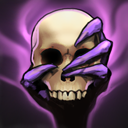 Fiend's Grip
Fiend's Grip is
 Bane
Bane's ultimate, and inflicts
Magic Damage. This is another very common damage type, and is used by the vast majority of spells and abilities that heroes have.
All heroes have a basic 25% resistance to magic damage, so the amounts you see listed next to powers will always come out lower than you think against other heroes.
Level 1
 Fiend's Grip
Fiend's Grip inflicts 100 magic damage per second for 5 seconds, giving us a nice round 500 damage. Against most heroes this will be reduced by 25%, meaning we actually inflict 75 damage per second, for a total of 400 damage.
If the target had an active
 Black King Bar
Black King Bar, the target would still be disabled, but would take 0 damage.

Pure Damage is blocked by Magic Immunity.
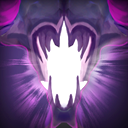 Brain Sap
Brain Sap inflicts
Pure Damage, which is essentially a modified version of
Magic Damage. It is still blocked by
Magic Immunity, but is
NOT reduced by
Magic Resistance, or boosted by
Magic Amplification.
This means that
Pure Damage will almost always inflict the exact amount of damage that is listed next to the power. This makes it extremely potent against heroes relying on
Armour or
Magic Resistance to protect them.
Level 4
 Brain Sap
Brain Sap inflicts 300 damage, so even against heroes with a
 Hood of Defiance
Hood of Defiance or abilities like Spell Shield it will still inflict 300 damage.

HP Removal cannot be blocked or reduced.
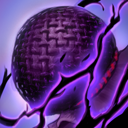 Nightmare
Nightmare inflicts a small amount of
HP Removal damage. This is quite an unusual damage type, and has various special conditions attached to it. It is
NOT reduced or blocked by
Magic Resistance, Magic Immunity or Armour. Neither is it boosted by
Magic Amplifcation.
However, it also doesn't quite "count" as damage - for example using
 Nightmare
Nightmare on somebody while they were using a
 Healing Salve
Healing Salve wouldn't cancel the salve, or reset the cooldown on their
 Blink Dagger
Blink Dagger.
Level 1
 Nightmare
Nightmare inflicts 20
HP Removal per second for 4 seconds, a total of 80 damage. Almost every hero will take the same amount of damage from this.
 BANE vs HUSKAR
BANE vs HUSKAR

Ok so that gives you the outline of how all these different damage types interact. Lets look at a detailed example from a game:
You're playing against a
 Huskar
Huskar, a hero who gains substantial Magic Resistance from
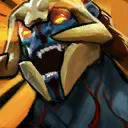 Berserker's Blood
Berserker's Blood once his health drops. You need to be extremely careful when you use your various abilities to get maximum impact on him.
We would start with
 Fiend's Grip
Fiend's Grip, as in a 1v1 situation we want to inflict our magic damage as early as possible, before its effects are reduced substantially by his resistance. As Grip ends we are quickly going to be presented with an angry
 Huskar
Huskar and will need to kill him quickly in order to survive. At this point you would need to judge his health, and how much more damage you could potentially do with your remaining abilities.
Level 4
 Brain Sap
Brain Sap and level 2
 Nightmare
Nightmare will inflict a combined total of 400 damage, and due to their damage types, will not be reduced by his magic resistance. Maybe we get in a few auto-attacks (Physical Damage) and then follow up with
 Brain Sap
Brain Sap to heal ourselves, and possibly
 Nightmare
Nightmare to finish the job. If he had a
 Blink Dagger
Blink Dagger we might need to avoid using
 Nightmare
Nightmare unless we were sure it would finish him - otherwise - he could
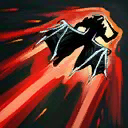 Blink
Blink away the instant it ran out.
CONCLUSION
I hope this brief guide has helped you get your head around damage types, and how they impact on your decision making ingame. It's often very important to get the right damage types when picking heroes, so that you can avoid their strengths and play to their weaknesses.






Dagon

For example, a hero like
 Batrider
Batrider deals almost exclusively in
Magic Damage, so can struggle to kill off heroes like
 Anti-Mage
Anti-Mage and
 Huskar
Huskar without backup from his team mates.








Alternatively, a hero like
 Alchemist
Alchemist deals almost exclusively in
Physical Damage, so maybe struggle to deal with high armour heroes and items like
 Ghost Scepter
Ghost Scepter.
Damage types are so important when picking as very few items allow you to inflict different types, even when you have a lot of farm. Almost all standard items give you more
Physical Damage, but only a few like Dagon,
 Maelstrom
Maelstrom,
 Orchid Malevolence
Orchid Malevolence and
 Ethereal Blade
Ethereal Blade give you a source of
Magic Damage.
 Blade Mail
Blade Mail is the only item that provides
Pure Damage. The nuke from
 Urn of Shadows
Urn of Shadows provides a small amount of
HP Removal.
Also be aware of enemy damage types when buying items yourself - don't stack armour or buy a
 Pipe of Insight
Pipe of Insight against the
Pure Damage of an
 Enchantress
Enchantress or Outworld Devourer when what you really need is a
 Black King Bar
Black King Bar to block it completely.




 BANE vs HUSKAR
BANE vs HUSKAR




















The whole point was to use one hero as an example, and go through the most common damage types in a way that new-intermediate players can understand and use. There is a link at the top of the article for people who want the full details!
The armour types stuff is a fair point, but there's not really any particular way of using that ingame - it's just something that happens.
For all you completionists, we also need to mention Composite Damage, which is reduced by both physical and magical resistances, but isn't blocked by Magic Immunity. It's used by a grand total of 4 heroes currently in the game :).
You forgot to go over universal damage.
7 Spells in the game (atm) use it, same as Magical but goes through Magic Immunity...nuff said.
He also forgot Chaos and Composite! D{8
Also they forget that some heroes will be able to damage you with skills even under magic immunity (
Nice blog ;x